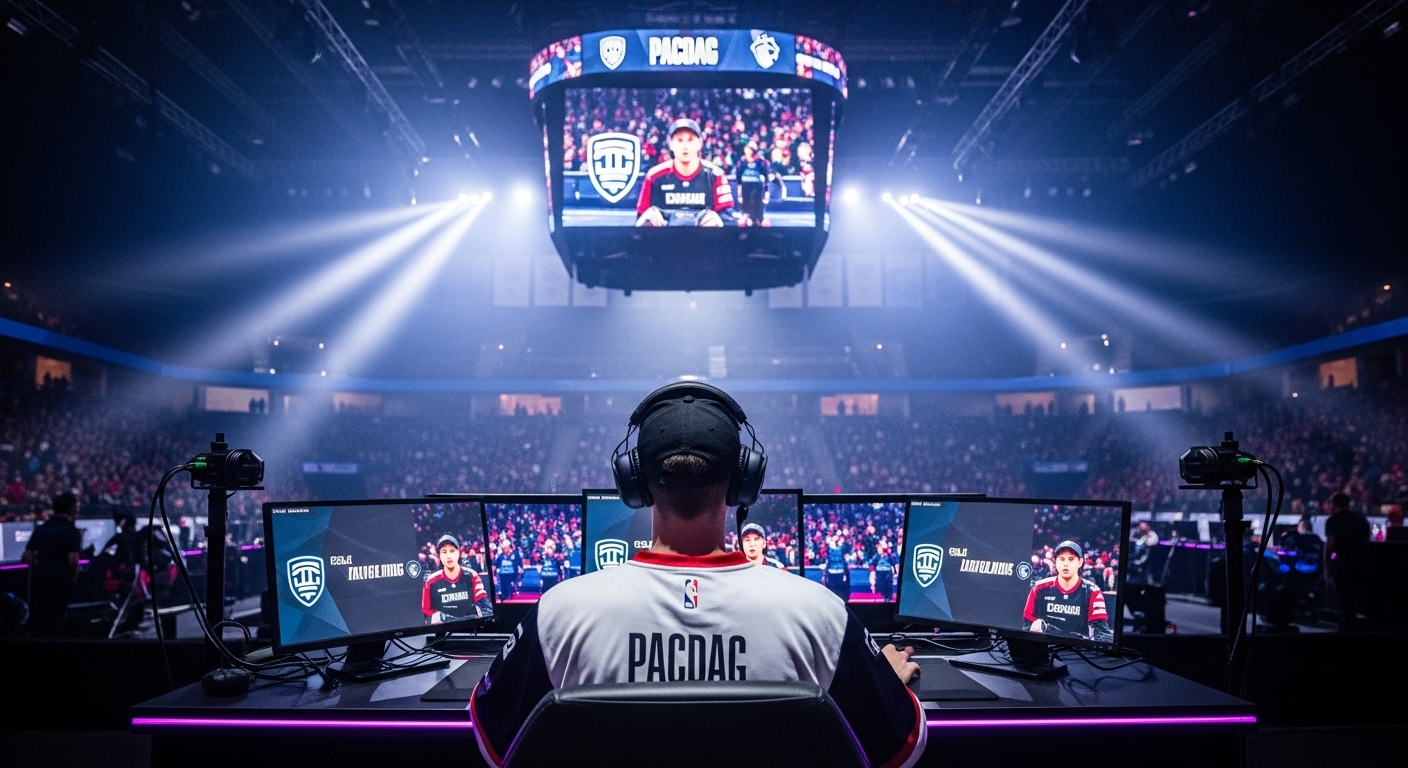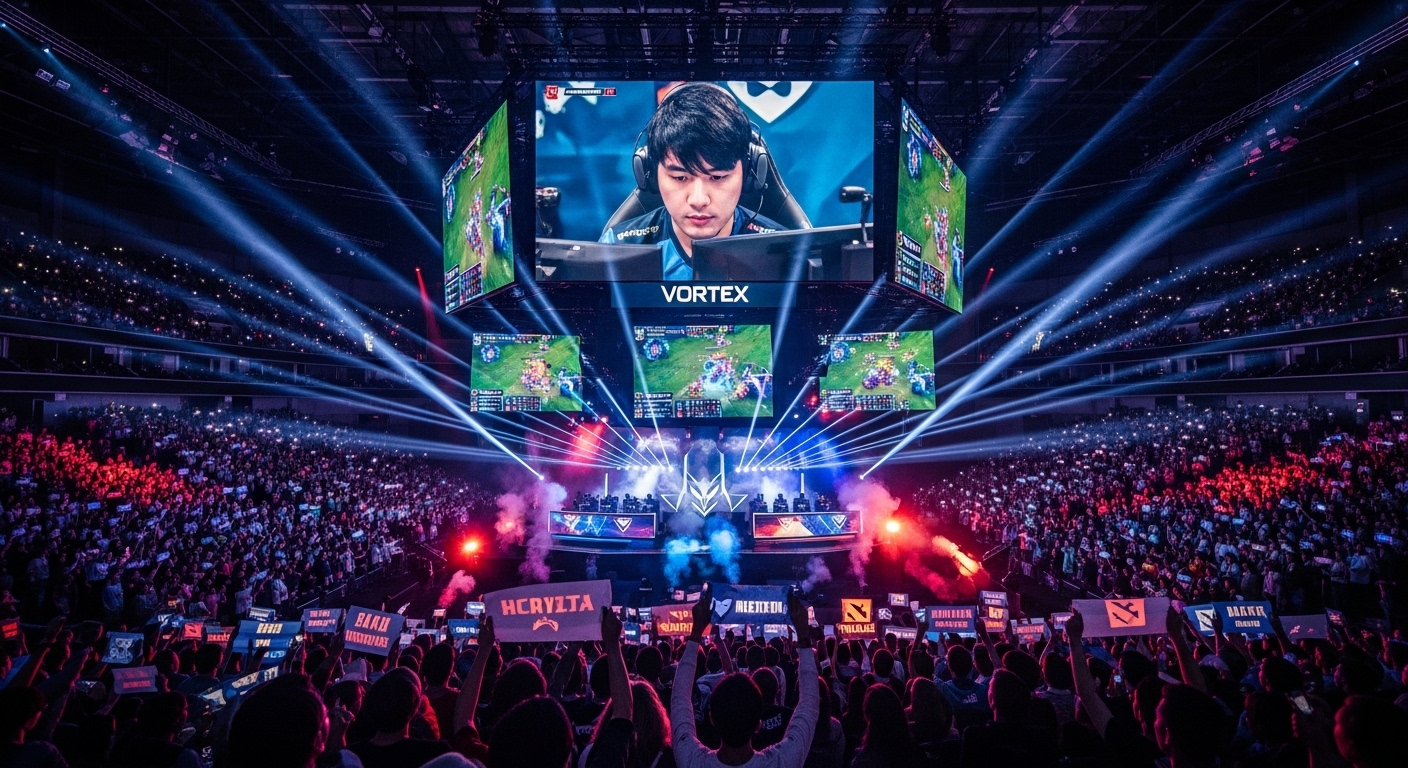Esports, once considered a niche pursuit for dedicated gamers, has evolved into a global entertainment juggernaut. From small LAN parties in basements to sold-out arenas filled with thousands of fans, competitive gaming has transformed into a phenomenon that rivals traditional sports in terms of viewership, engagement, and investment. What was once a community-driven passion has now become a billion-dollar industry with corporate sponsorships, professional leagues, and world championships. But how did we get here, and what does the future hold for this digital revolution?
In this blog post, we’ll explore the journey of esports, its rise to prominence, the key components that have made it a global industry, and the future of competitive gaming. We’ll also take a closer look at the players, teams, games, and technologies that have contributed to esports’ meteoric rise, as well as the challenges and opportunities that lie ahead for the industry.
The Origins of Esports: A Humble Start
Esports, short for electronic sports, refers to the competitive aspect of video games, where players compete against each other in organized tournaments or leagues. While competitive gaming may feel like a recent invention, its origins can be traced back to the 1970s, when arcade games like Pong and Space Invaders first introduced players to the idea of competing for high scores. These early games sparked the first inklings of competitive gaming, though they were still very much a solo endeavor.
However, the real catalyst for competitive gaming came in the late 1990s, when the internet and multiplayer games began to gain traction. Games like Quake, StarCraft, and Warcraft III introduced the idea of players competing with one another over local area networks (LANs) and, later, the internet.
The first major esports tournament, The Cyberathlete Professional League (CPL), was established in 1997. It offered professional players an opportunity to compete for cash prizes and recognition. This was followed by the creation of the World Cyber Games (WCG) in 2000, which helped bring global attention to competitive gaming by hosting tournaments for a wide range of titles. The global growth of esports took root in these early years, particularly with the success of StarCraft in South Korea.
The Growth of Esports in the Early 2000s
The early 2000s saw a rapid expansion in the esports scene. StarCraft—particularly StarCraft: Brood War—became a massive cultural phenomenon in South Korea. The game’s popularity led to the establishment of esports as a legitimate career path in the country, with players competing in professional leagues and matches broadcast on national television. South Korea’s success in the esports industry set a precedent that would be followed worldwide.
During this period, several other games rose to prominence, contributing to the growth of esports globally. Counter-Strike, a first-person shooter developed by Valve, became one of the most popular competitive games of the 2000s. Its early success in online multiplayer competitions and LAN events laid the groundwork for the professional Counter-Strike scene that exists today.
Additionally, Warcraft III and Dota (Defense of the Ancients) became staples of competitive gaming. Warcraft III led to the creation of the Dota mod, which would go on to become one of the most iconic esports titles of all time: Dota 2.
The Rise of Major Leagues and Global Competitions
As the esports scene expanded, it began to take on a more professional structure. The 2010s saw the emergence of major esports leagues and tournaments, many of which are still around today.
The Launch of League of Legends
In 2009, League of Legends (LoL), developed by Riot Games, was released. LoL quickly became one of the most dominant esports titles in the world. Its free-to-play model, combined with strategic depth and fast-paced gameplay, made it a favorite among both players and spectators.
Riot Games established the League of Legends World Championship, which would become one of the most-watched esports events globally. By 2013, LoL’s World Championship had already attracted over 30 million viewers, setting a record for esports viewership at the time. Today, it regularly attracts over 100 million viewers for its final matches.
The success of League of Legends helped cement esports as a mainstream form of entertainment. With its vast fanbase and professional league structure, LoL set the stage for other games to follow suit, contributing to the further growth of competitive gaming.
Dota 2 and the Era of Huge Prize Pools
Another significant milestone for esports came in 2011 with the release of Dota 2 by Valve. Dota 2 took the already popular Dota mod from Warcraft III and made it a standalone game. Its competitive scene exploded, particularly with the launch of The International (TI), an annual tournament that boasts some of the largest prize pools in esports history.
In 2011, the inaugural The International had a modest prize pool of $1 million. However, through crowdfunding and community support, the prize pool of TI grew year after year. By 2018, TI’s prize pool exceeded $25 million, making it one of the largest prize pools in the history of esports.
The scale of these prize pools attracted massive attention from players, sponsors, and fans alike, further legitimizing esports as a competitive and lucrative career path.
The Birth of Esports Leagues
As esports continued to grow, professional leagues began to emerge, modeled after traditional sports leagues. One of the most notable examples was the creation of the Overwatch League (OWL) by Blizzard Entertainment in 2018. The OWL was designed to function like a traditional sports league, with city-based teams, a regular season, playoffs, and a grand finals event.
The creation of city-based teams and the involvement of traditional sports organizations helped bring esports closer to the structure of conventional sports leagues. The Call of Duty League (CDL) and Rocket League Championship Series (RLCS) followed suit, further solidifying the professionalization of esports.
Esports in the Modern Era: A Multi-Billion Dollar Industry
Today, esports has evolved into a multi-billion dollar industry, with global revenues exceeding $1 billion annually. The rise of esports has been fueled by a combination of factors, including the increasing popularity of live streaming platforms, the professionalization of players and teams, and the growing involvement of sponsors and investors.
The Role of Streaming in Esports
One of the key drivers of esports’ success has been the rise of live streaming platforms, most notably Twitch. Twitch, launched in 2011, revolutionized the way gamers and fans interact. With its live streaming capabilities, Twitch allowed fans to watch their favorite players and teams in real-time, while also providing an interactive platform for chat and commentary.
The rise of streaming also allowed professional players to build personal brands and cultivate large followings, further elevating esports as a form of entertainment. Many players transitioned into full-time content creators, streaming their gameplay and offering insights into their competitive strategies. This helped turn esports players into celebrities and influencers, further increasing the visibility and popularity of competitive gaming.
In addition to Twitch, other platforms like YouTube Gaming and Facebook Gaming have also played a significant role in growing the esports ecosystem, providing multiple avenues for content creators to connect with audiences.
Corporate Sponsorship and Media Deals
Esports has attracted substantial investment from both gaming-related and non-endemic companies. Major corporations like Intel, Coca-Cola, Red Bull, and BMW have all partnered with esports organizations to sponsor tournaments, teams, and individual players. These sponsorships have been essential in driving the industry’s growth, as they provide financial backing and help elevate the professional level of competition.
The esports ecosystem has also benefited from significant media deals. Networks like ESPN, TBS, and Turner Sports have aired major esports tournaments, bringing competitive gaming into the homes of mainstream audiences. This exposure has helped bridge the gap between traditional sports and esports, making the latter more palatable to a broader audience.
Esports Arenas and Live Events
As esports has grown, so too have the venues in which competitions take place. Esports events now fill large arenas and stadiums, with sold-out crowds watching live tournaments. For example, the League of Legends World Championship and The International are held in massive arenas, often in major cities around the world. These events attract tens of thousands of fans in person and millions of viewers online.
Esports events have become immersive experiences, complete with live commentary, musical performances, and other entertainment elements, transforming them into spectacles akin to traditional sports events.
The Future of Esports: Innovation and Expansion
The future of esports looks incredibly bright, with continued growth, innovation, and opportunities on the horizon. As the industry matures, several key trends are likely to shape its trajectory.
The Integration of Virtual and Augmented Reality
The future of esports may include the integration of virtual reality (VR) and augmented reality (AR) technologies. VR has already been experimented with in games like Echo Arena and VRChat, and as the technology improves, it’s likely that VR esports will become more mainstream. AR, on the other hand, could offer new ways for fans to engage with esports events by providing real-time statistics, player data, and interactive content.
Esports in the Olympics?
Another exciting possibility is the inclusion of esports in the Olympic Games. The International Olympic Committee (IOC) has expressed interest in recognizing esports as a legitimate sport, with discussions about including esports events in future Olympics. While there are challenges regarding the types of games to be included and the governance of esports,



